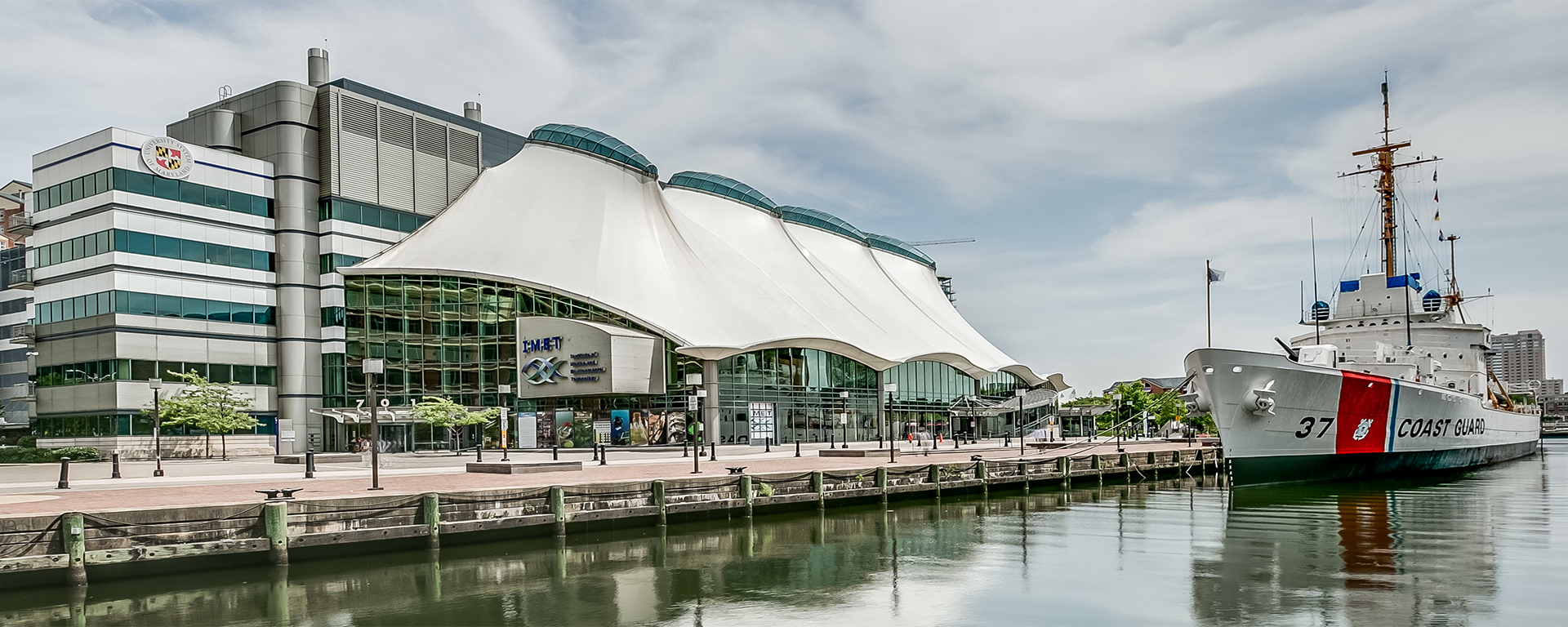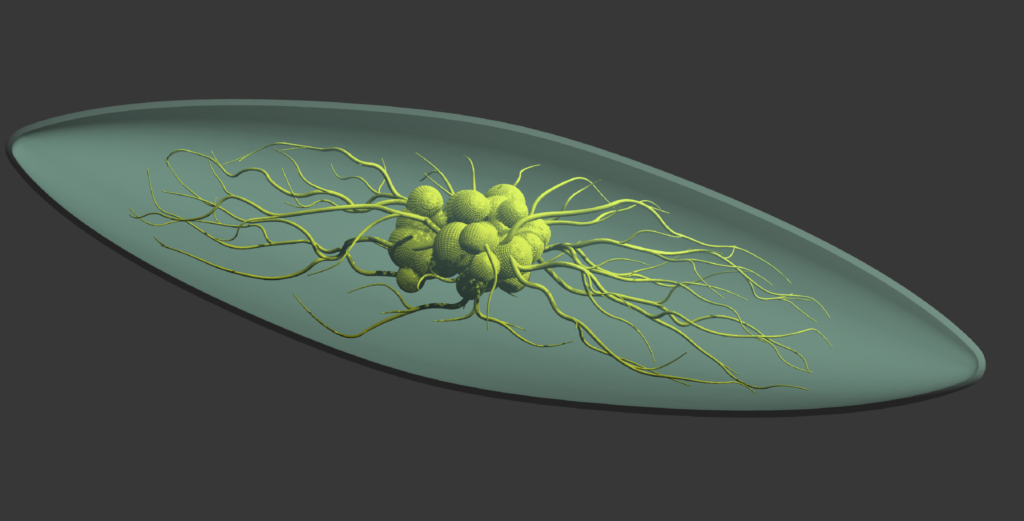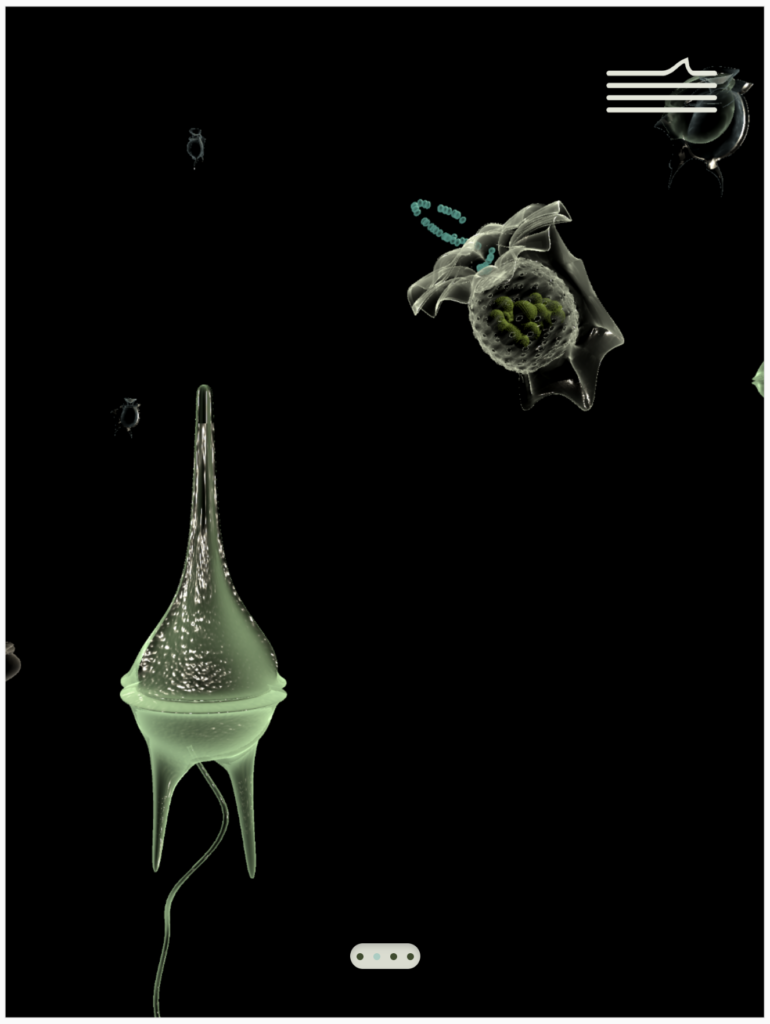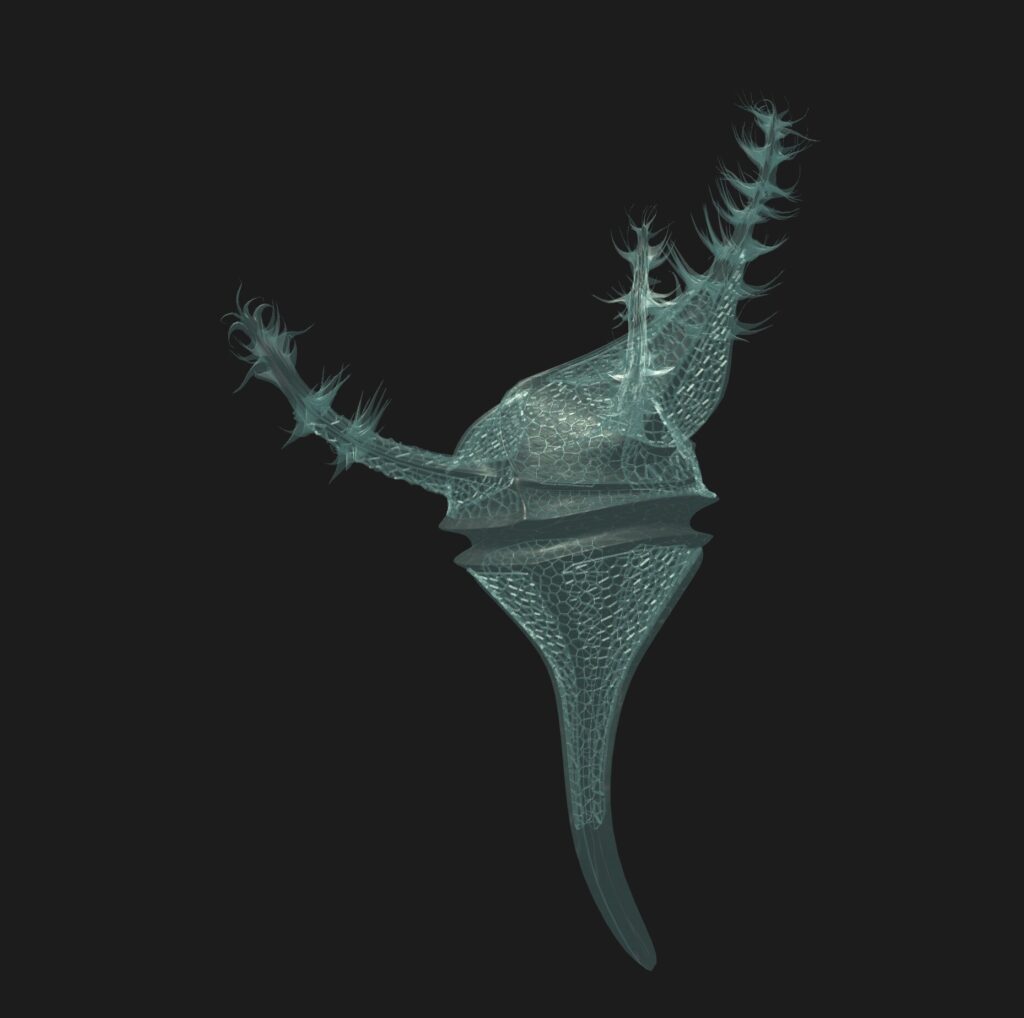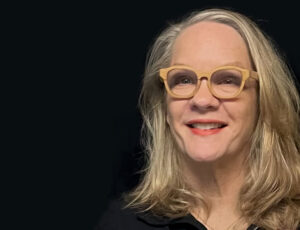The waters of the Chesapeake Bay teem with microscopic organisms—swimming single-celled plankton known as dinoflagellates. But how can we peer into the depths to see them?
That’s the question driving a new creative project led by Lisa Moren, professor of visual arts at UMBC and artist-in-residence at the University of Maryland Center for Environmental Science’s Institute of Marine and Environmental Technology (IMET), and IMET associate research professor Tsvetan Bachvaroff.
Moren and Bachvaroff have developed “Under the Bay,” an augmented reality app that allows users a glimpse into the lives of the dinoflagellates. Bringing the project to life are close collaborators Marc Olano, associate professor of computer science and director UMBC’s game development track, and Baltimore-based composer Dan Deacon.
This project brings together experts from divergent fields, whose work generally takes very different forms, to create something fully unique. Moren, a multi-disciplinary artist, works with emerging media, public space and works-on-paper. Bachvaroff’s research focuses on the evolution and biology of dinoflagellates, which are often associated with “red tides” or harmful algal blooms. Olano is known for innovations in game design, while Deacon is known globally for electronic music involving large-scale audience interaction.
Public demonstration
In a first public demonstration of Under the Bay on October 9, from 1 to 4 p.m., participants will download the project app and hold their phones over water in the Inner Harbor near IMET (701 East Pratt Street). Dozens of animated microorganisms, typically too small for the human eye to see, will appear on their screens—beautiful, large, and vibrantly changing in color.
Moren has produced a teaser trailer for the event, viewable here on Vimeo.
A unique experience for each user
Under the Bay’s screen animations will change color when conditions in the Bay change, while stories and music will connect memory, science, and anecdotal observation. When the Bay water is healthy, the organisms appear swimming and billowing over their field of view like happy jellyfish. When the water is unhealthy, the organisms become shriveled like discarded plastic bags in the water.
“Under the Bay will tell a unique story for every user, changing over time, over seasons, but always from the viewpoint of the water itself,” says Moren. “The microscopic dinoflagellate species represented in augmented reality are hundreds of millions of years old, and because they are at the very bottom of the food chain, they are important to all marine life.”
Live sensors in the Chesapeake Bay direct how the organisms appear and how their stories are told. In addition to undulating forms and color, originally composed music by Deacon will change in pitch and tempo based on the water conditions. Stories will describe the amazing survival strategies of these unicellular creatures that make their own light, food and energy when water conditions are favorable. When severe oxygen deprivation occurs in the water, voiceover stories of survival become choppy, fragmented, even choking.
The app will also provide users with basic information about Chesapeake Bay health, including oxygen levels, salinity, and temperatures. Users will be able to select past dates to compare the health of the Bay at various times.
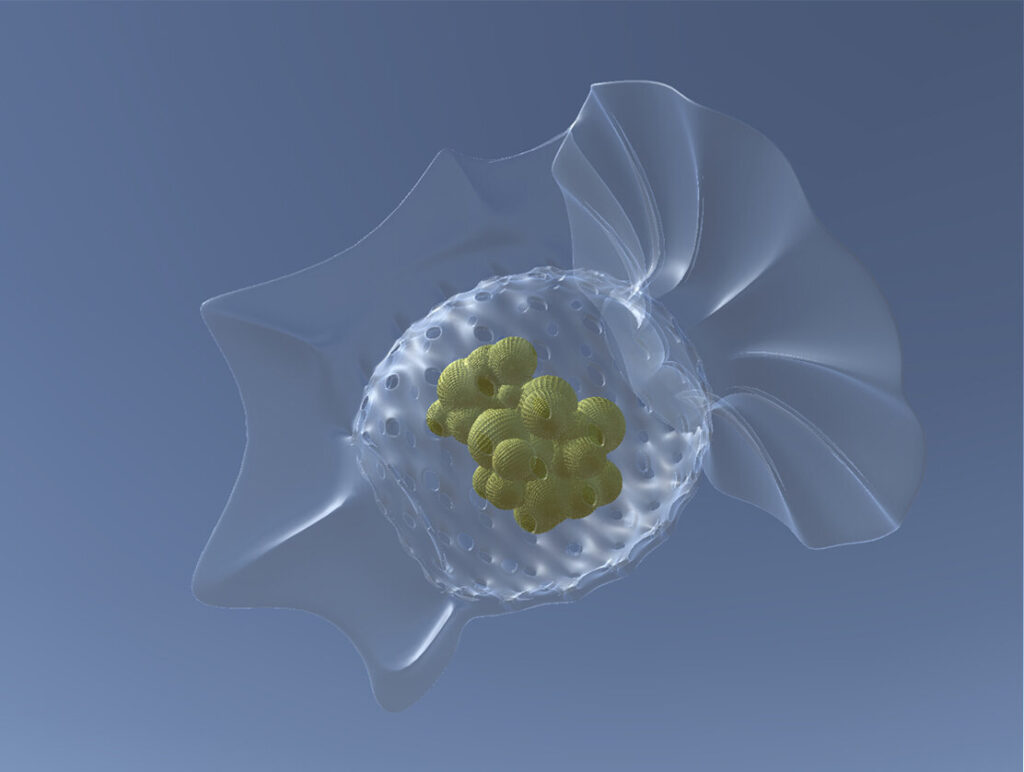
The eight audio stories created for Under the Bay, including music by Dan Deacon, are also available as separate podcasts. The podcasts present the original stories, which will be heard in the app in modified versions based on the changing conditions of the Bay.
The narrators of the stories describe the Chesapeake Bay from multiple perspectives, sharing personal observation intertwined with scientific knowledge, unpacking recent political events, and advocating for diversity. Some episodes invoke evocative imagery of microbes as faeries and the planet as a living organism that inhales and exhales. Other occasional topics include cryonics, meditation, the origins of the Internet, monuments, protests, U.S. elections, and algae blooms, all conveying a world out of balance.
Worldwide launch
Following the public demonstration and alpha test on October 9, Moren anticipates exhibiting a beta version of Under the Bay at UMBC’s Center for Art, Design and Visual Culture in January and February 2022, and then the final version at an additional art exhibition in downtown Baltimore in March and April 2022. With the launch of Under the Bay for iOS and Android devices in March 2022, the app will be freely available worldwide.
Development of Under the Bay has been supported by the Saul Zaentz Innovation Fund at The Johns Hopkins University and by the Robert W. Deutsch Foundation.
Header image: Institute of Marine and Environmental Technology. Image courtesy of IMET.

